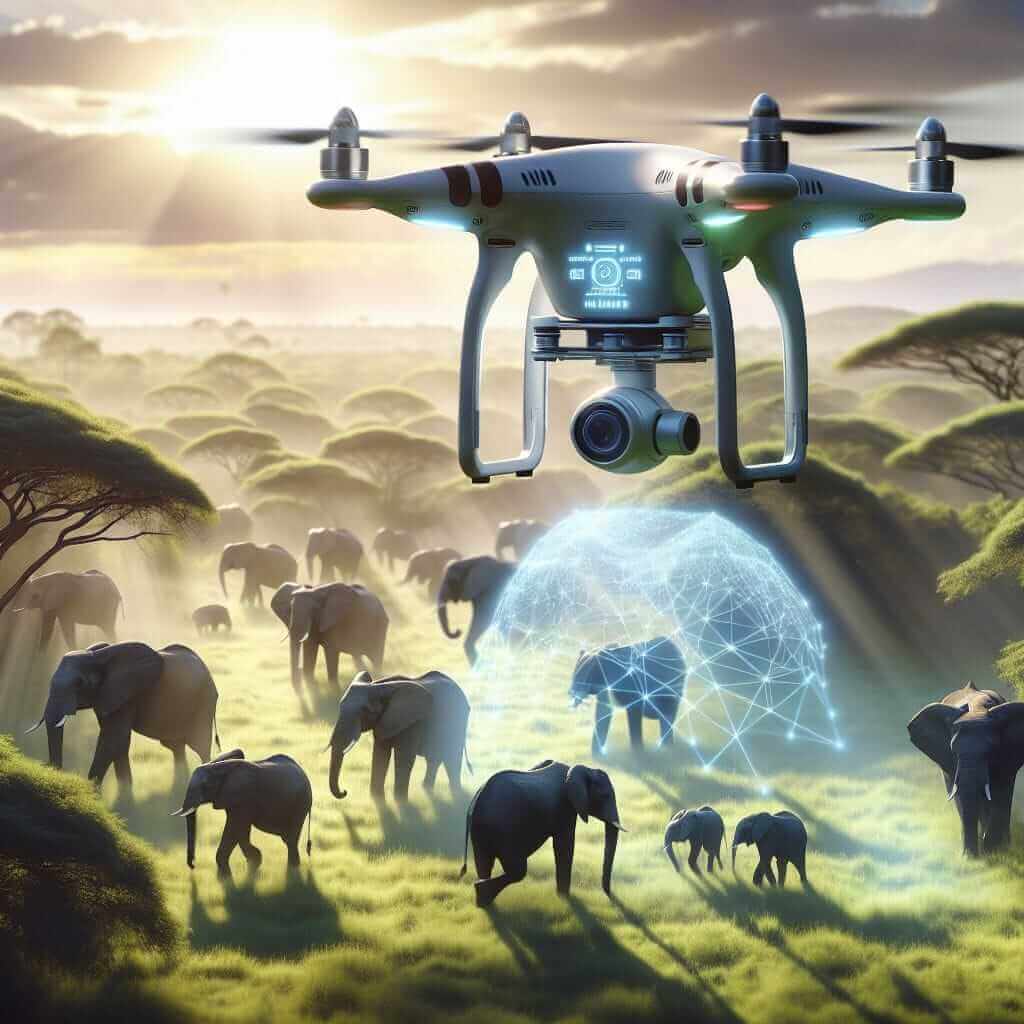The IELTS Reading test is a crucial part of the IELTS exam, assessing test-takers’ reading comprehension skills over three sections. One of the topical areas that have been garnering attention recently is the role of Artificial Intelligence (AI) in environmental conservation. Understanding this subject not only sharpens your knowledge but also prepares you for potential future IELTS readings. Given the increased emphasis on technology and conservation, this theme is a relevant and likely candidate for upcoming IELTS tests.
Practice Reading Passage: How AI is Transforming Environmental Conservation Efforts
Artificial Intelligence (AI) is at the forefront of revolutionizing environmental conservation efforts across the globe. By leveraging advanced algorithms, machine learning, and data analytics, AI offers innovative solutions to some of the most pressing environmental challenges.
AI and Wildlife Monitoring
AI technology plays a pivotal role in wildlife conservation. By utilizing AI-powered drones and camera traps, researchers can monitor endangered species without disturbing their natural habitats. AI systems analyze the collected data to identify species, track movements, and even detect poaching activities. For instance, AI has been employed to monitor rhino populations in Africa, ensuring real-time surveillance and timely intervention to prevent poaching.

Predicting Environmental Changes
Another significant application of AI is in predicting environmental changes. Through the analysis of vast amounts of data from satellites, sensors, and historical climate records, AI can model future environmental conditions. These predictions assist policymakers in taking proactive measures to mitigate adverse effects. For example, AI has been used to forecast forest fires, enabling authorities to implement precautionary measures and resources allocation.
Enhancing Renewable Energy Efficiency
AI also contributes to optimizing renewable energy sources. Machine learning algorithms can predict energy production from solar and wind power, allowing for better grid management and efficient energy distribution. In Germany, AI systems have enhanced the efficiency of wind farms by predicting wind patterns and adjusting turbines accordingly.
Artificial Intelligence’s role in environmental conservation is expansive and includes many more applications such as water management, pollution control, and waste management. By integrating AI technologies into conservation strategies, the planet can benefit from more sustainable and effective practices.
Questions
Multiple Choice
-
What role does AI play in wildlife conservation according to the passage?
- A. It helps researchers conduct fieldwork.
- B. It improves the efficiency of renewable energy sources.
- C. It monitors endangered species and detects poaching activities.
- D. It predicts future climate conditions.
-
How has AI contributed to combating forest fires?
- A. AI systems have been used to track animal movements.
- B. AI analyzes environmental data to predict forest fire risks.
- C. AI improves the efficiency of energy production.
- D. AI systems help in water management.
True/False/Not Given
- AI-powered drones are used exclusively for monitoring bird species.
- AI can analyze historical climate records to predict future environmental conditions.
- Germany has applied AI only to solar power to enhance energy efficiency.
Matching Information
6–9. Match each AI application with its corresponding benefit:
- A. Wildlife Monitoring
- B. Predicting Environmental Changes
- C. Enhancing Renewable Energy Efficiency
- D. Waste Management
Benefits:
6. Reducing poaching activities.
7. Better allocation of energy resources.
8. Modeling future environmental conditions.
9. Tracking endangered species without disturbance.
Short-answer Questions
- What technology does AI use to monitor rhino populations in Africa?
- How can AI predictions assist policymakers?
- In which country has AI been used to enhance the efficiency of wind farms?
Answer Keys
- C
- B
- False
- True
- Not Given
- A
- C
- B
- A
- AI-powered drones and camera traps.
- By enabling them to take proactive measures to mitigate adverse effects.
- Germany
Common Mistakes
- Misinterpreting the focus on the main idea, confusing AI’s specific roles (e.g., AI in wildlife monitoring versus renewable energy).
- Neglecting details that specify geographic locations or technological tools used (e.g., mistaking solar power enhancement for wind power).
Vocabulary
- Endangered (adj.) [ɪnˈdeɪndʒərd]: Threatened with extinction.
- Surveillance (n.) [sɜːˈveɪləns]: Close observation, especially of a suspected spy or criminal.
- Proactive (adj.) [prəʊˈæktɪv]: Creating or controlling a situation rather than just responding to it after it has happened.
- Mitigate (v.) [ˈmɪtɪɡeɪt]: Make less severe, serious, or painful.
- Algorithm (n.) [ˈælɡərɪðəm]: A process or set of rules to be followed in problem-solving operations.
Grammar
- Relative Clauses: For providing extra information about a noun (e.g., “AI-powered drones, which monitor endangered species, provide real-time data.”).
- Passive Voice: Used to emphasize the action rather than the subject (e.g., “AI algorithms are being used to predict environmental changes.”).
Tips for High Reading Scores
- Skim and Scan: Quickly skim the text for general meaning, and then scan for specific information to answer the questions.
- Understand Question Types: Familiarize yourself with different question formats, such as multiple-choice, True/False/Not Given, and short-answer questions.
- Time Management: Allocate your time wisely. Spend less time on easier sections to give yourself more time for challenging ones.
- Practice Regularly: Consistent practice with a variety of texts and question types will improve your speed and accuracy.
For further reading practice materials, check out our related article: How is AI Transforming Wildlife Conservation Efforts.